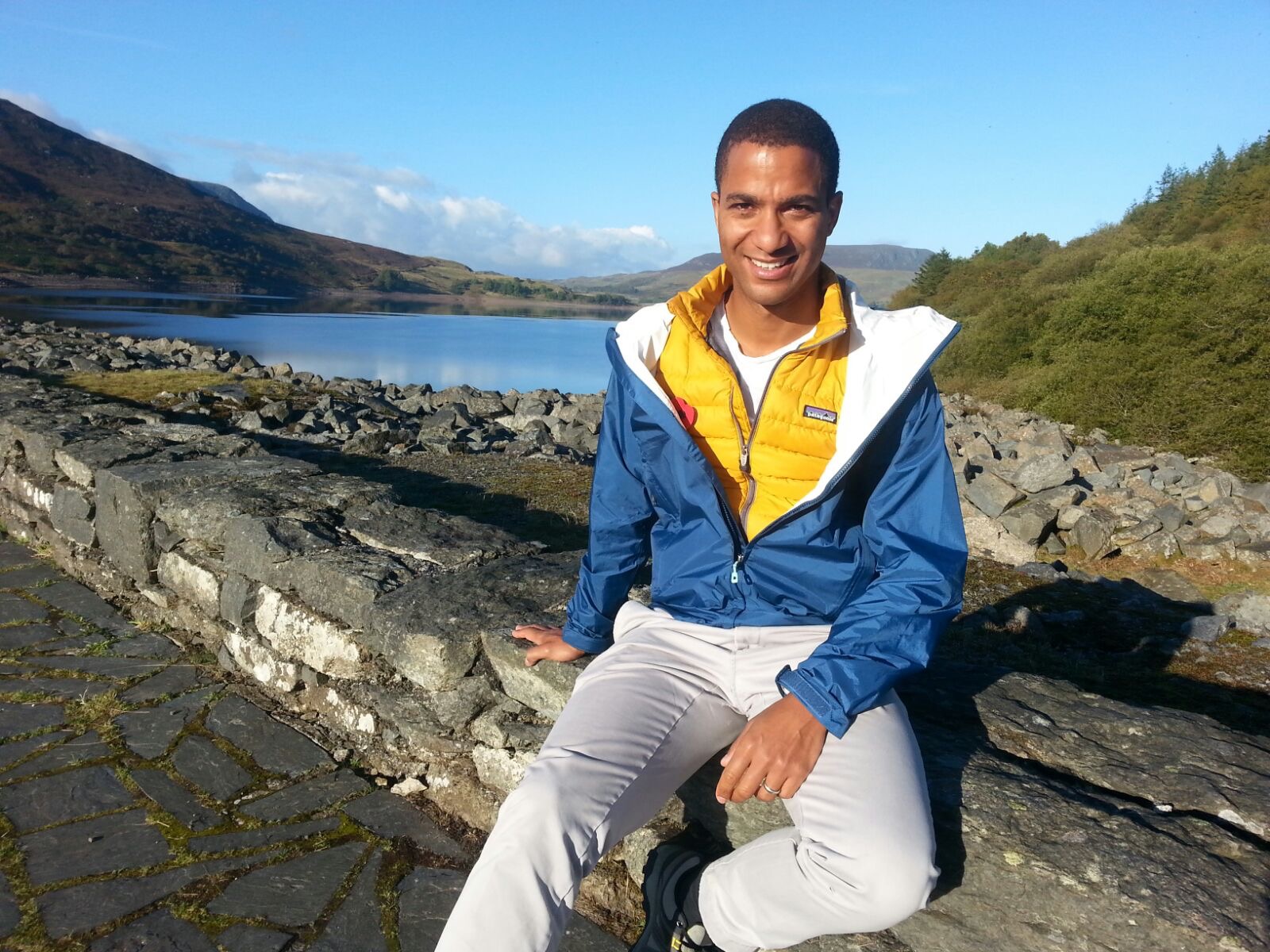As droves of tourists head west and southwest along well-beaten paths to Pembrokeshire, Cornwall and Devon, it’s easy for them to miss the relatively small, untouched Welsh gem cushioned in between. Gower is ‘tardis-like’ in what it has to offer – small in size but packed with a range of places to visit that, thankfully, aren’t glaringly signposted like so many other tourist areas. But if you know where to go and what to look for, Gower doesn’t need signposts to spoil the view.
BBC Countryfile presenter Sean Fletcher guides us around his favourite getaway – the Gower Peninsula in south Wales. Here you will find tips on how to plan your own trip to this wild coast.
Let me take you from wild woodlands and historical haunts, to golden sand beaches and intriguing rock formations millions of years in the making. You’ll see that Penrhyn Gŵyr, as it’s known in Welsh, has plenty to offer visitors who enjoy a place of beauty that is as much about farming and wildlife as it is tourism. Despite Gower becoming the UK’s first Area
of Outstanding Natural Beauty in 1956, many of my friends from the area still see it as their little secret. I may be jeopardising those friendships by writing this.
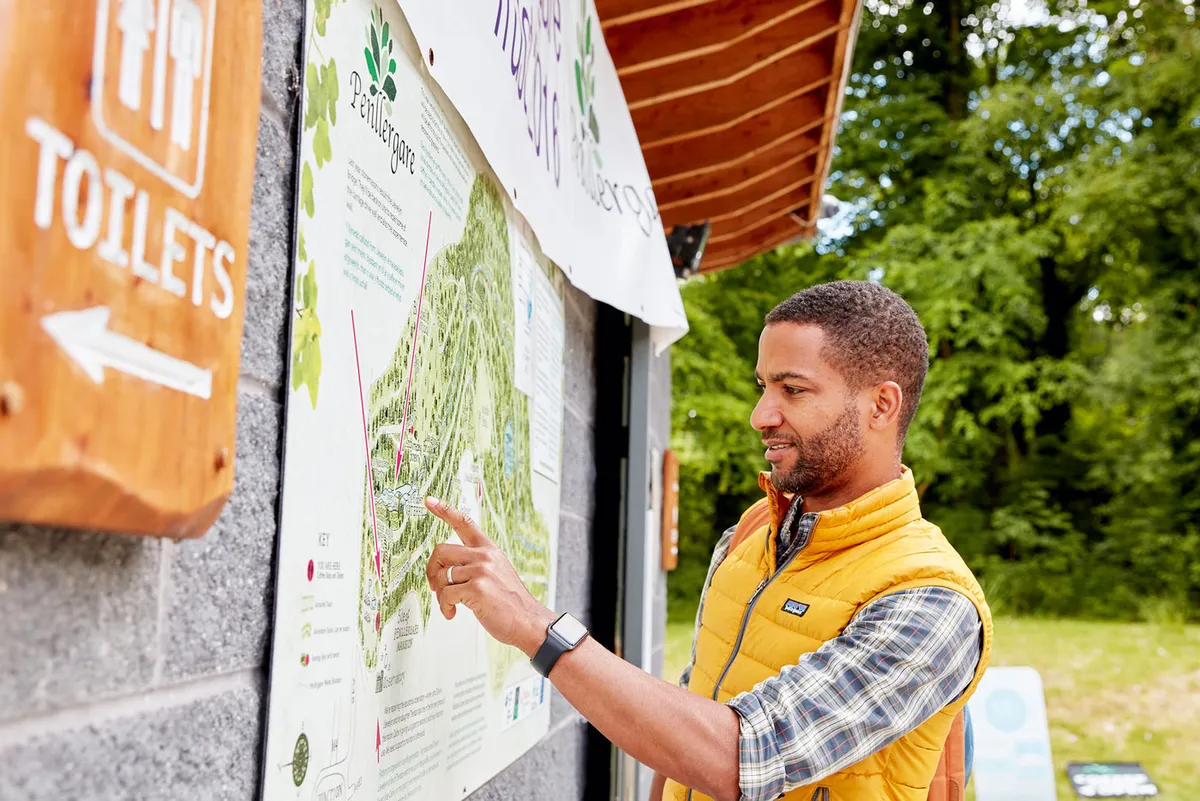
It’s about 25 miles around the peninsula and, should you walk it (camping on the way), my journey would take four or five days, depending on how often you stop to admire the view.
Our route begins at the doorstep of Gower, at the magical forest waterfall at Penllergare near the M4, before heading along much smaller arteries to the raised spine of the peninsula. Don’t be surprised if you find yourself sharing the landscape with sheep, cattle and wild horses; much of Gower is common land, which means local farms use this landscape for grazing.
From the high ground, we’ll turn north to its wildlife-rich tidal river estuary where the River Loughor meets the sea. Wales is known for its Norman castles, and there are plenty of them here, as well as an iron lighthouse dating back to 1865. We’ll visit those 14th-century and Victorian constructions, before turning south along Llangennith beach and Rhossili Bay, both battered by Atlantic swell and a magnet for surfers all year round. There are calmer beaches on the Peninsula’s south side, and the trip ends with an ice cream at Mumbles, overlooking Swansea Bay and its lifeboat station.Waterfall Walk
For most people, coastal Wales means beaches, but there’s a freshwater hinterland with its own identity hiding in the forests. And that’s where we’ll start, at the peninsula’s entrance, Penllergare Valley Woods. This hidden gem is a stone’s throw from the M4, but seems a million miles from the motorway. You can get close enough to the waterfall’s torrent of water to feel the spray on your face and breath in the water-cleansed air. From here, you can explore the recently restored windy paths and trails through the woods and over the stone-arched Llewelyn Bridge, named after philanthropist John Dillwyn Llewelyn, who created the park in the early 19th century. Though it looks old, the bridge was only built a few years ago – there was originally a mansion here, but almost a century of neglect has erased it. The River Llan is made of sterner stuff, and is home to a rich local wildlife, from kingfishers to trout.

Arthur’s Legacy
Just as trout travel upstream to spawn, we head to higher ground along Cefn Bryn – literally the ‘spine of the hill’ in English – where you can see both sides of the peninsula. Gower’s central point is marked by the giant boulder Arthur’s Stone. Legend has it King Arthur threw it across the Loughor Estuary from nearby Llanelli. Whether you believe that or not, the 25-tonne boulder is well balanced for visitors to marvel at. There’s far more evidence that a glacier deposited the stone, along with the thousands of other rocks that litter the landscape.
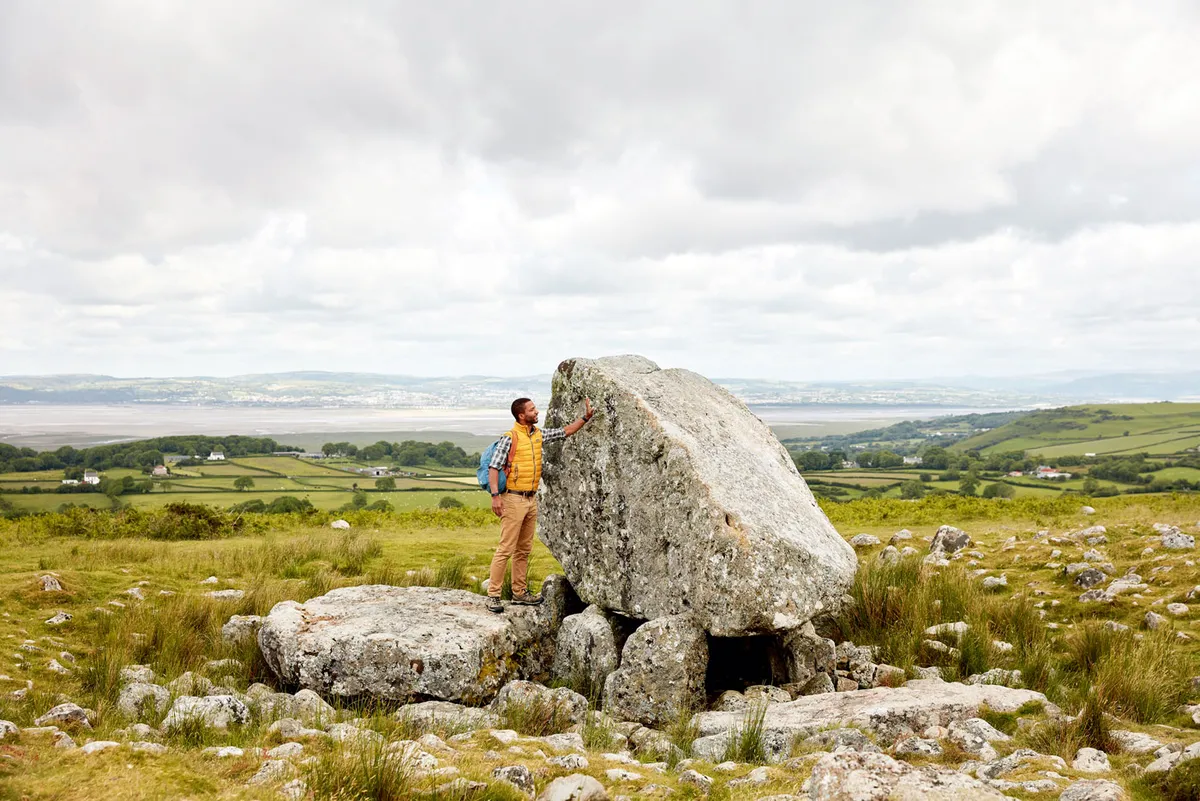
Arthur’s Stone is one of the few things above 6ft here, so on a warm day you’re blessed with fantastic views of the estuary to the north and the sea to the south. But on a cold day, a bitter wind cuts through your clothing. I was reminded of how exposed Cefn Bryn is on a recent visit, when I noticed a herd of wild ponies standing guard around a foal that had passed away – the harsh natural order of our countryside.
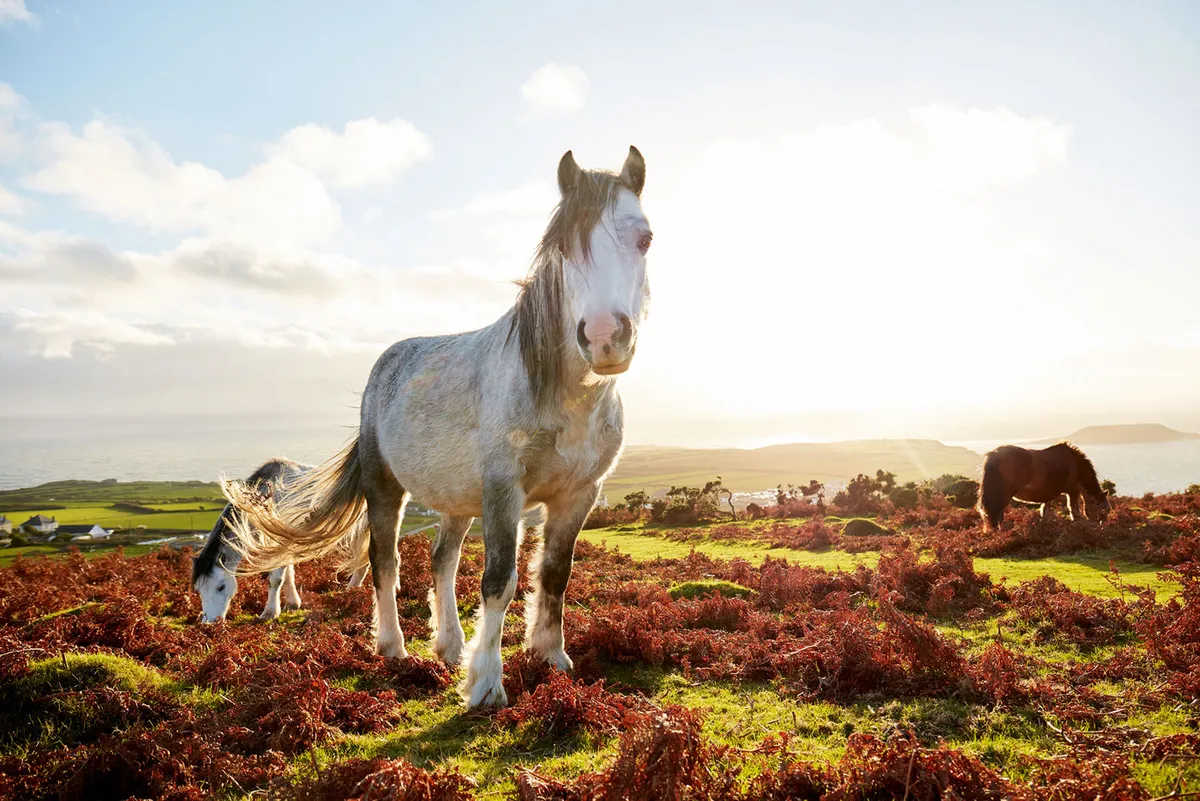
Physical geographers will enjoy seeing a complete river cycle in the space of a few miles. Streams turn to small rivers guiding rainwater from the top of the peninsula to the sea. They are all dwarfed by the sprawling River Lougher to the north. And that’s where we’re off to next.
Wonderful Weobley
On your way to the Loughor Estuary you’ll come across Weobley Castle, near Landimore. It sits in the grounds of a working farm – the new and old symbolising the fantastic mix of qualities on Gower. It’s relatively small by Welsh castle standards, but just as intriguing as its cousins across the land.
Equally as impressive as the castle’s ruins are the views over the vast expanse of Llanrhidian saltmarshes. The farm graze their sheep here to produce the local delicacy ‘saltmarsh lamb’, which can be bought from the farm shop at the castle itself or at Swansea Market.
The saltmarshes mirror the changing seasons – there aren’t many places that display their variations as well as the marshes, from spring’s rich green, to summer’s paler variety, and the bronze and rust colours of autumn and winter.
Metal Lighthouse
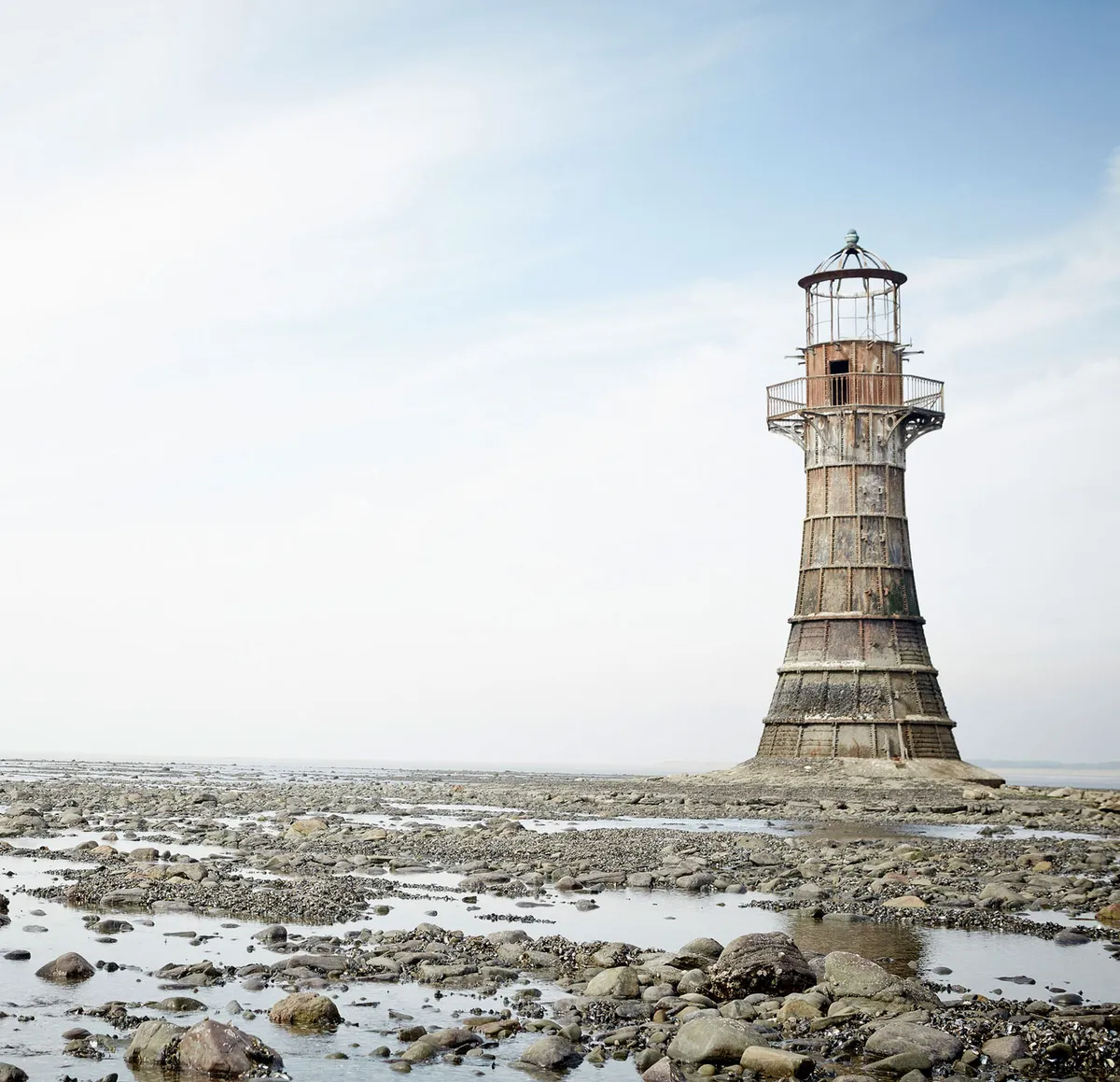
Five kilometres and 500 years separate Weobley from Whiteford Lighthouse, a cast-iron construction standing at the northern tip of the peninsula. The beaming warning light is long gone, but what’s left is just as striking – a manmade beacon in a sea of natural beauty. On paper, a metal lighthouse doesn’t seem appealing, but every time I visit I’m fascinated by its appearance in the shallow estuary. When it was erected in 1865, it was the ‘flatpack’ version of a lighthouse, made in London and shipped out to colonial waters around the world. There are still a couple in the Caribbean, and while there are others in Britain, Whiteford is the only wave-washed iron lighthouse on these shores. So getting out to it has to be timed with the tides. In 2000, it was famously put on the market for £1, with about £100,000 worth of renovation costs. An American businessman attempted to buy it with the aim of dismantling the flatpack building and taking it to the USA, but thankfully it stayed here. I think it’s priceless – and I’m not alone as it’s now a Scheduled Ancient Monument, a status guaranteeing its future at the top of the peninsula. While you’re there you may spot cockle pickers to the east at Penclawdd gathering their harvest or other inhabitants of the estuary, such as golden plovers or oystercatchers. It’s worth trying the local produce, especially the bara lawr a cocos – laverbread (seaweed) and cockles – with a rasher or two of bacon.
A wave and a prayer
Before we hit the beach, let’s go to church – a place of worship that has served its community since the 12th century. St Cenydd in Llangennith is the largest church on Gower and I always get a strong sense of the people who have come here for almost 900 years, partly because not much seems to have changed. They would have prayed for heaven and harvests, but many of the current generation of Llanegennith pray for waves.
Surfers travel from all over the world to Llangennith beach in North Gower. The waves are made in the Atlantic and can be rather large. On a breezy day, the water’s natural force may be a bit exhausting for the less energetic swimmers among us (and I include myself in that group), who would be better off on the calmer south coast.
Walk the sands
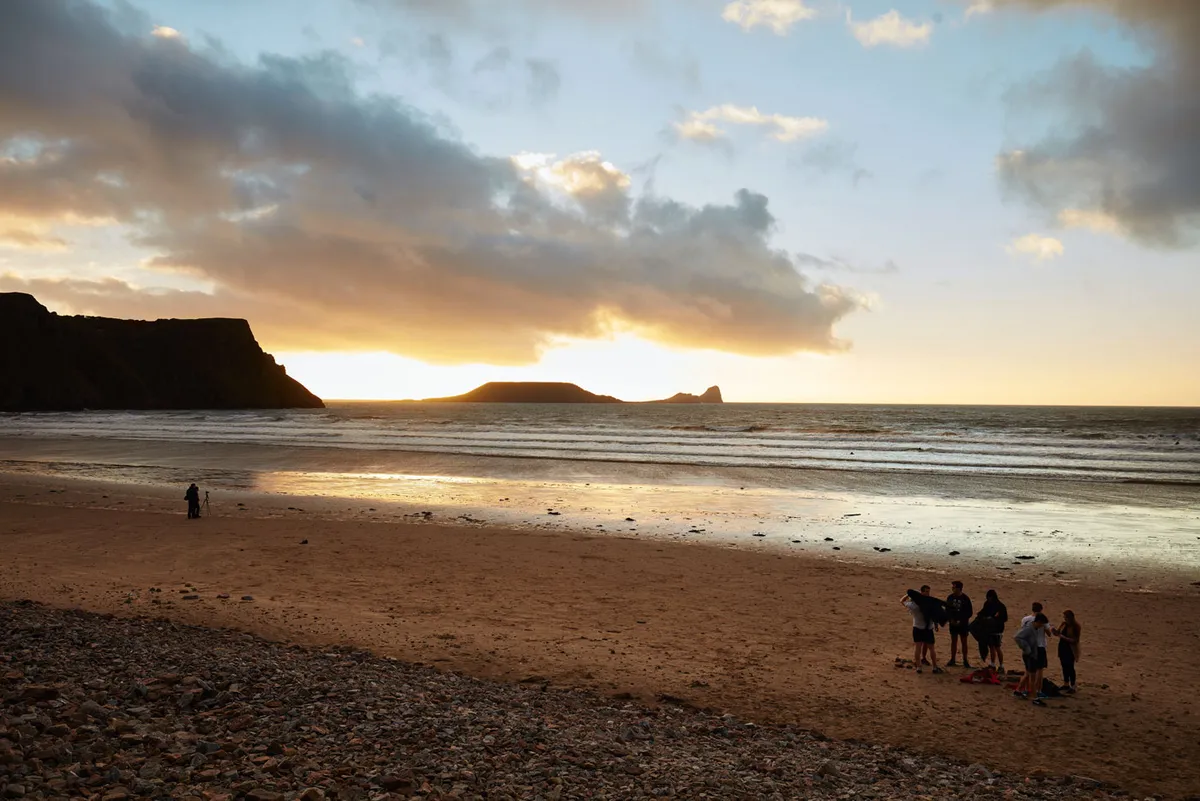
But it’s not all about the water – the three-mile stretch of golden sand makes it a spectacular site that can be explored on foot or horseback from Pilton Moor Stables and Livery in Rhossili. It’s remote but not inaccessible, so you’ll never find it too busy. The southern part of this seafront is Rhossili Beach, and on your way there you may come across the wreck of the Helvetia, a cargo ship that sank in 1887. It’s embedded in the sand, but erosion has reduced it in size dramatically in the 20 years I’ve been visiting, so it may not be there for much longer. Combined, Llangennith and Rhossili beaches form one long stretch of sand. It’s the backbone of Rhossili Bay, which is often voted one of the best beaches in the country, and was recently named Europe’s best in a top 10 of world beaches alongside locations in the Caribbean, Brazil and Hawaii. Granted, the weather may not be as reliable as those places, but the surfers, runners, pony trekkers, kite flyers and walkers who come all year round prove there’s much more to the seaside than sunbathing. In fact, I enjoy a winter’s walk here with the dog in blustery conditions as much as a leisurely day in the sun. On those occasions, a brisk walk west to Worm’s Head blows the cobwebs away.
I call Worm’s Head, Gower’s Tail, and you get the sense that if Gower wagged its tail, you’d be flicked off into the sea. It’s not dangerous but when the wind is blowing hard and the tide is coming in you do sense how small and helpless you are. Worm’s Head is spectacular, thanks to the stubborn limestone that refuses to be shaped like the sandstone cliffs of Rhossili Bay.
Smugglers Hideout

That combination of hard and soft rock around the headland has created magical hiding places along the coast. The coves, caves and cliffs made it the perfect place for smugglers to store their contraband. Culver Hole is a mysterious manmade adaptation of one of these caves. Many myths surround its intended use, including a medieval dovecote, and a place for smugglers to hide their hoard, like John Lucas, a renowned name in Welsh pirate folklore. The jagged rocks in the sea and on land make it tricky to get to unless you know exactly where you’re going, which was my experience while researching this guide. Despite visiting it previously, I found myself lost in a sea of inhospitable rocks before deciding to abort my mission – a taste of how difficult it must have been for customs officers in John Lucas’ time.
Tor Bay
If I had to pick one place on Gower that I have enjoyed more than any other, it’s Tor Bay. I have been to many peaceful and picturesque beaches in the Mediterranean, North and South America, Australia and Africa, but I can safely say that none match this fantastic enclosed part of the coast. It’s self-contained when the tide is in, and links up with neighbouring Three Cliffs and the more touristy Oxwich Bay, when the tide is out. Like the shore at Llangennith, it’s a 10-minute walk from the road so you can find yourself on the yellow stretch of sand in no time, and like the rest of the coastline on the peninsula, it’s as appealing in the winter as it is in the summer. I’ve been warned not to let my inquisitive dog off the lead around the thick ferns as eager adders lie in wait. But on the beach there are no such dangers. The two small car parks, and the walk down a narrow path and a steep rocky trail to the sand, give you the impression this stretch of sand was meant to be protected.
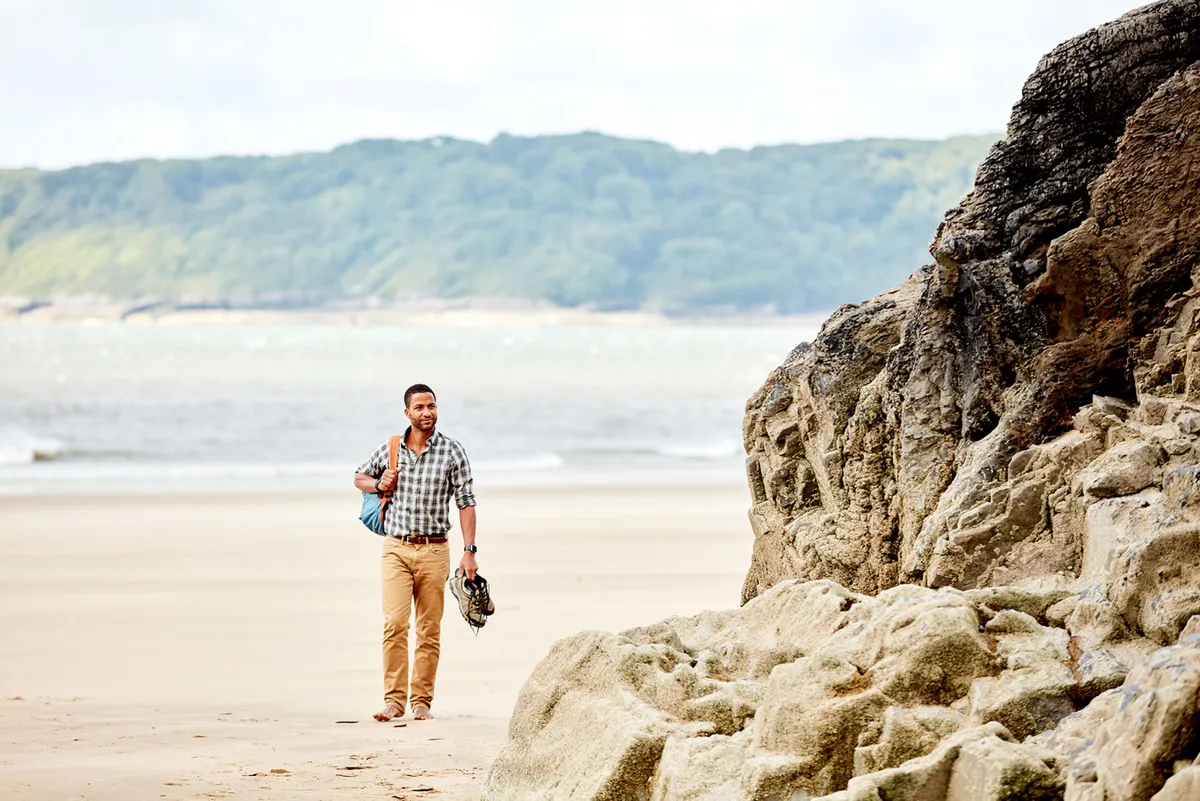
The reward for those who make it is a fantastic beach, a dreamy place that I find refreshes and recharges me in a way no other place can. My wife and I enjoyed some of our early dates here – a seaview to savour with a glass of wine. It doesn’t get much better than that.
Castle and cliffs
We’re heading west now, back towards Swansea, and on your way to our next location, pop into Pennard Castle.
The Normans who built the stone construction about 800 years ago certainly picked a good view. Like modern-day visitors, they would have got a huge amount of pleasure from the vista over Three Cliffs Bay, but didn’t factor in the encroaching sand dunes that eventually forced them to abandon the site. While coastal planning may not have been high on the list of priorities then, it certainly was for following generations five miles down the road at Langland Bay. It’s picture-postcard pretty with Victorian-style beach huts perched perfectly on the border between firm land and sand that’s rockier than Tor Bay. It’s everything you would want from a trip to the seaside, so bring your bucket and spade and enjoy an ice cream or fish and chips on the front. Many people come in the summer but I know others who rent an apartment for New Year’s Eve and there can’t be many better places to see the year in.
Mumbles Ice Cream

If there’s only one place to have an ice cream, save it for our final stop. Anyone who knows me well knows I enjoy mint choc chip a bit too much – and I rarely go to Mumbles without stopping off at either Verdi’s Café or the sweeter Joe’s Ice Cream parlour at Mumbles. You can burn off the calories with a long walk along the coastal path before heading home
Gower has given me so much over the past 20 years. You could say it was the initial spark to my marriage. It’s certainly a place for me to refresh and recharge my batteries.
It’s untouched. It’s clean. And it still feels like a secret. So let’s keep it between ourselves.
